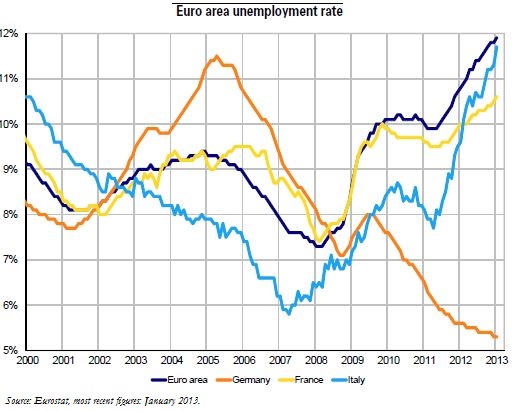Trésor-Economics No. 110 - How have the Hartz reforms shaped the German labour market?
Since 2005, the German economy has created 2.5 million jobs, mostly part-time positions or work on fixed-term or temporary (agency) contracts. This job growth has reduced the unemployment rate by 5 points to the historic low of 5.3% according to the International Labour Office (ILO) definition of unemployment.
Germany's structural labour market reforms in the early 2000s are frequently cited as one of the explanations for this "German miracle." The reforms were a response to a sluggish economy with sluggish growth, a high unemployment rate (close to 10%), and a shrinking working-age population. In 2002, the Hartz Committee (officially, the Committee for Modern Services in the Labour Market) proposed directions for reform, under the principle of Fördern und Fordern (supporting and demanding). The reforms were set out in four laws aimed at strengthening job-search activities, providing incentives for the unemployed to accept a job, and encouraging labour force participation, notably for women and older persons. Additional measures accompanying the Hartz reforms included shortening the period of entitlement to unemployment benefit, ending options for early retirement, and reducing employer social security contributions.
These reforms have had profound effects on the functioning of the German labour market. The published evaluations of the Hartz reforms conclude on the whole that they have had a significant impact on the labour market, primarily through better matching of labour supply and demand, and greater incentives to work. The combination of several factors (enhanced counselling, the lowering social security contributions on labour, and the reduction in benefit income) is considered to have promoted a return to employment for those furthest from the labour market.
This performance on the employment front must nonetheless be weighed against greater income inequality and poverty in Germany. The poverty rate increased significantly between 2000 and 2005, from 12.5 to 14.7%. The rise is especially pronounced for persons in employment, and even more, for the unemployed. This is attributable at least in part to structural effects, in that the Hartz reforms put people to work in temporary or part-time jobs, which do not allow them to rise above the poverty line.
Finally, the fact that the 2008-2009 crisis, despite the severity of the recession in Germany, had a mere impact on the labour market is attributable only in part to the reforms. The resilience is mainly explained by emergency measures taken to increase flexibility in working-time schemes (e.g., short-time working, and running down "time-saving accounts"). Those measures were facilitated by the quality of social dialogue, and by German firms' determination to retain human capital in a tight labour market.
